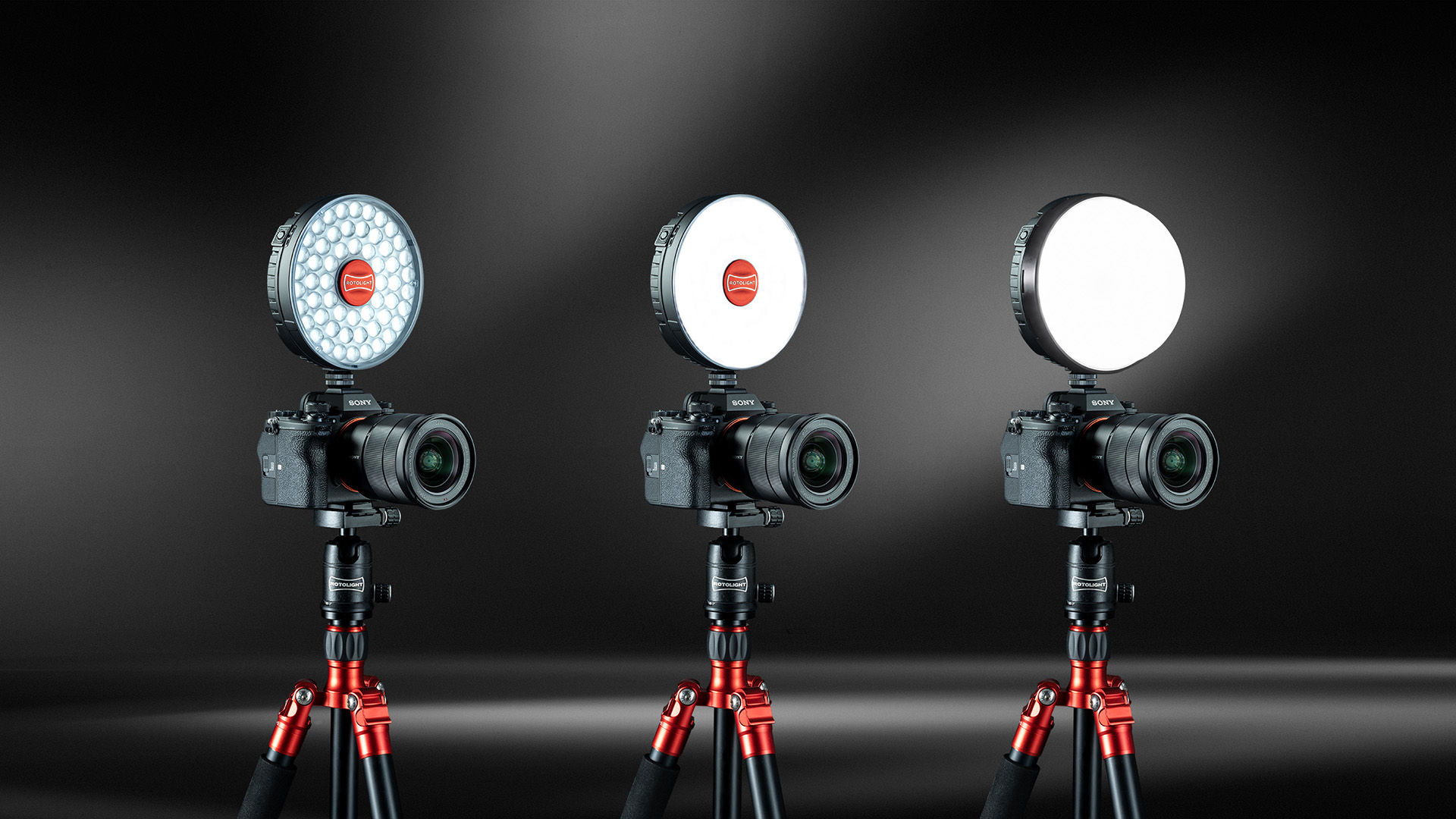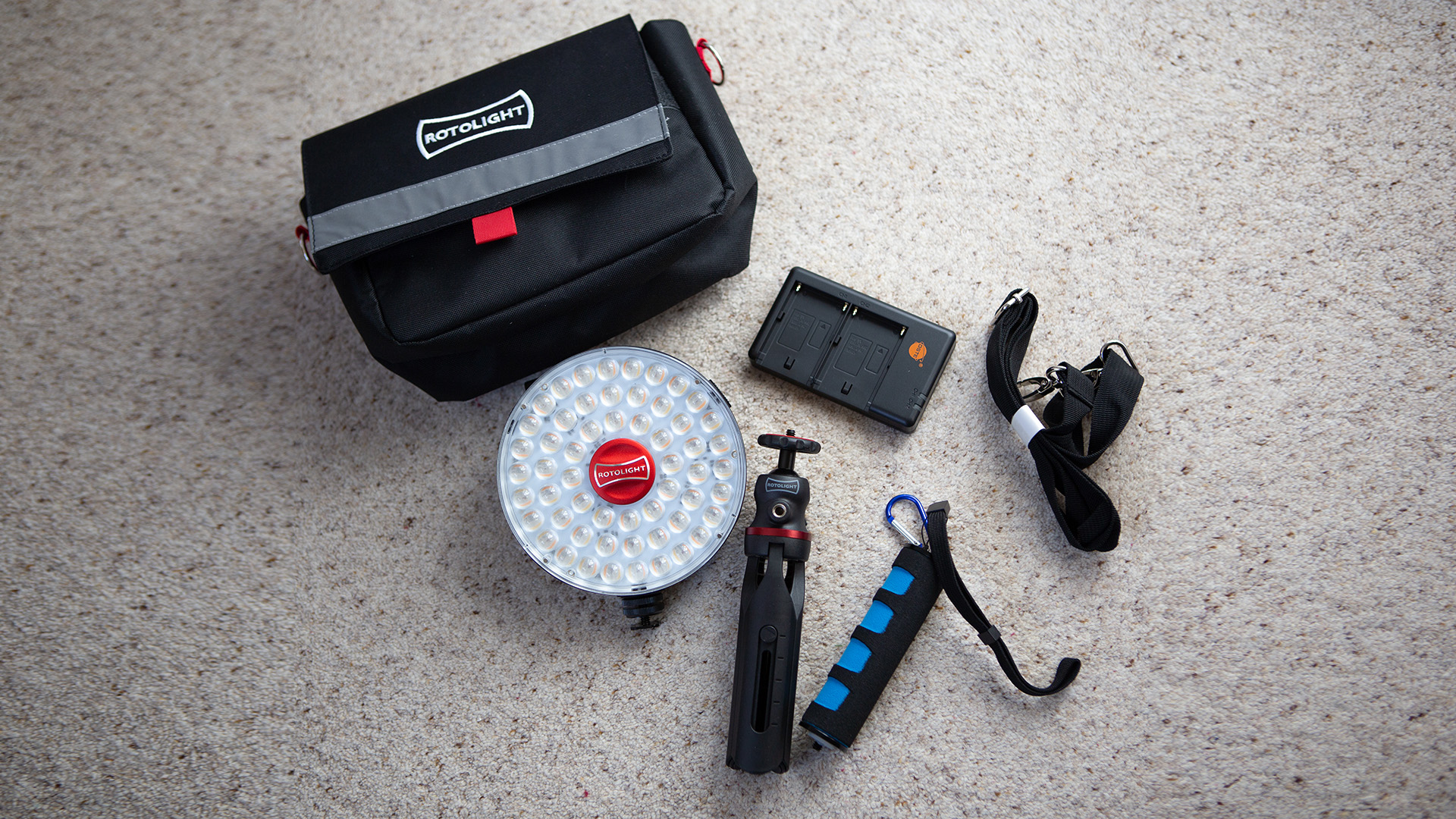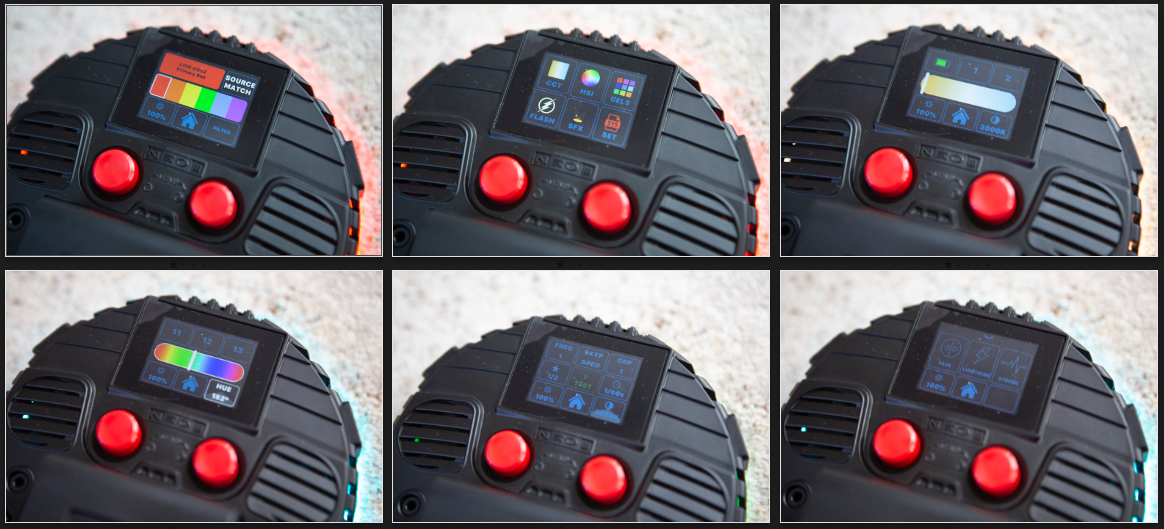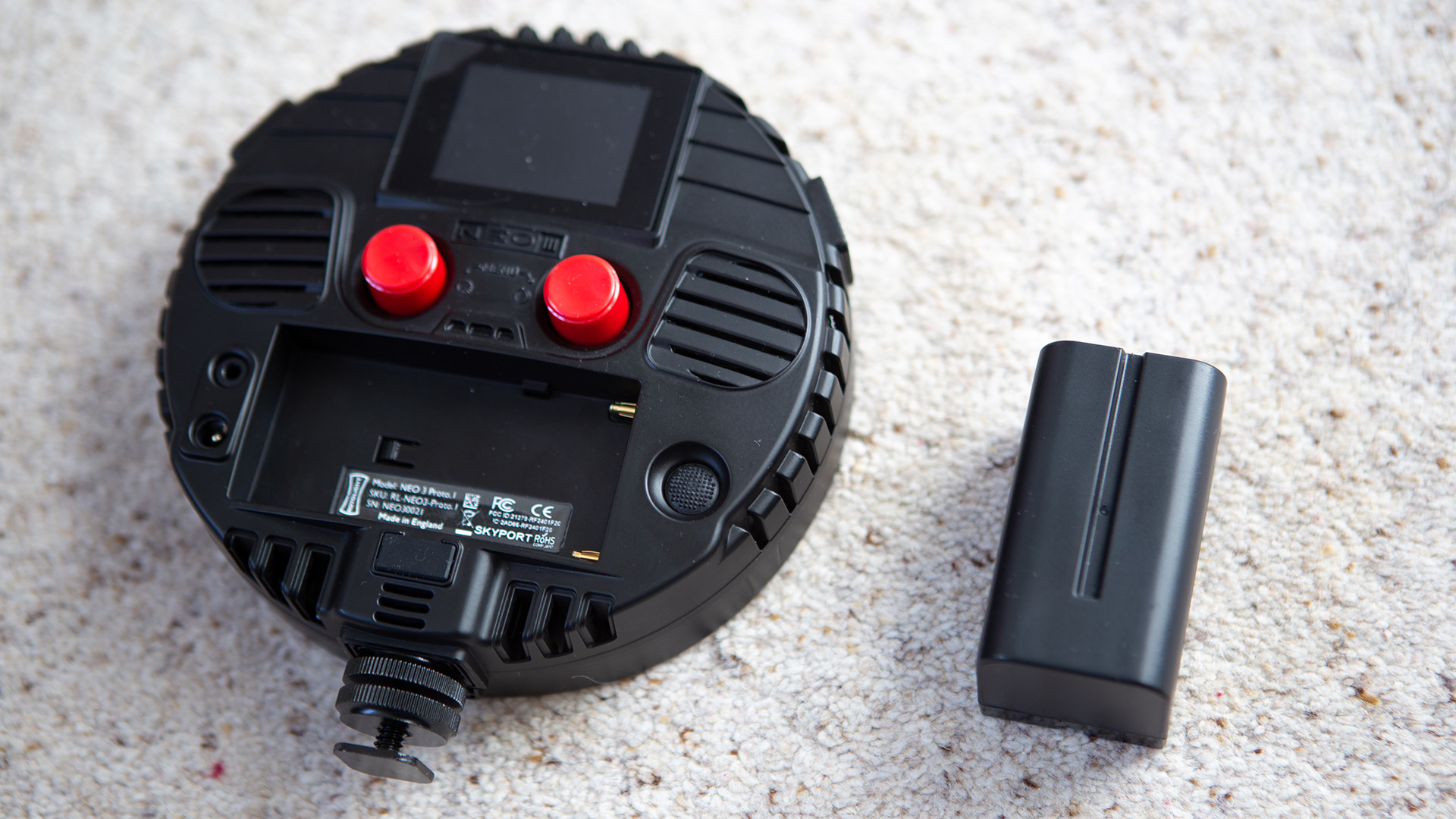Rotolight NEO 3 review: the ultimate photo and video on-camera light
If you are looking for a light for your DSLR or mirrorless camera, the Rotolight NEO 3 is the best light for your money


The Rotolight NEO 3 is a powerful on-camera LED continuous and flash light. It also offers an impressive range of color effects and a wide color temperature range.
-
+
Very bright
-
+
No recycle time for flash
-
+
Huge control over temperature and color
-
-
More features than you may need
-
-
Too small for some subjects
Why you can trust T3

The Rotolight NEO 3 is the latest update to the popular small continuous LED and flash NEO model and extends its abilities in terms of power and control. The result is a light that not only performs well as a continuous light for video but can easily replace your regular flashgun too.
The compact light can be used mounted on your camera’s hot-shoe or placed on a stand and fired remotely for more creative work. You can even combine multiple lights to build a portal studio set up for both indoor and outdoor use.
Being LED-based, it actually offers RGBWW chips to provide a full spectrum of colors and color temperatures, even for flash use. This means that you don’t need to invest in gels or filters to adjust your lighting and enables you to match other light sources and achieve the effect you want quickly and easily.
If you need something more powerful, Rotolight also offers the AEOS 2, which is a larger 1x1 version, capable of providing a much brighter flash and continuous source for larger scenes.

Rotolight NEO 3 review: price and availability
First offered as a Kickstarter, both the NEO 3 and its big brother, the AEOS 2, are now available as a full release from all your regular camera suppliers. The NEO 3 basic ‘starter kit’ which includes the main light and lithium battery starts from £429/$599. It is also available in the Ultimate bundle, with a diffuser dome and fast charger for £458/$649 and in a three-light kit with light stands, diffusers, batteries and a hard case for £1,715/$2,399.

Rotolight NEO 3 review: design
While the NEO 3 has a similar look to the previous NEO 2 model, the whole light has been redesigned. The LEDs themselves are much bigger, with lenses on each one to provide 140% brighter light. It actually uses the same LEDs that feature on Rotolight’s pro cinema Titan lights.
The biggest change however is on the back of the light. Instead of a simple digital number value, there is now a 2.0-inch touchscreen display. This allows full control of the LED and flash functions, including color temperature, brightness, flash sync and special effects.
Get all the latest news, reviews, deals and buying guides on gorgeous tech, home and active products from the T3 experts
The power now also comes from a chunky lithium battery rather than AAs, which makes swapping and recharging much faster. The provided battery gives you up to three hours of continuous use or 85,000 flashes.
There’s an option for a diffuser that simply clips onto the front of the device as well as all existing Rotolight accessories. There are also adapters available to use both Speedring and Bowens S light modifiers.

Rotolight NEO 3 review: features
The NEO3 uses an RGBWW LED array, which includes two white chips in addition to the regular RGB. This ensures a brighter and more accurate white light in temperatures from 3,000 to 10,000 Kelvin, in addition to any of 16.7 million colors. There are 2500 in-built digital filters in the light, so you can get a precise color display that is easily repeatable across multiple lights.
It is seriously bright too, delivering 4500 lux at 1m distance when in continuous light mode and 10,000 lux in flash mode. According to Rotolight, that makes it the world’s brightest on-camera flash. The NEO 3 is 140% brighter in flash mode than the previous model and more than sufficient for portraiture. By combing two or three of these lights, it’s possible to use them as you would a basic studio flash set. If you want to shoot larger subjects, like cars or groups of people, the AEOS 2 has you covered.
Unlike other hybrid flash and continuous systems, the NEO 3 uses the same LEDs for both. This means that all of the color temperature and filter options are also available for the flash. And as there are no capacitors used, there is zero recycle time needed, allowing you to keep shooting.
All of the controls for the NEO 3 are available from the rear color touchscreen display. There are six main sections to the menu, covering the continuous, flash options and system settings. The CCT provides white light control with both brightness and color temperature sliders. The HSI provides hue and saturation controls while the gels section gives you access to all of the 2500 filters, divided by color group. From within the flash menu, you can control the flash speed, temperature and model light, as well as set the group and frequency for any remote trigger. The SFX provides lighting effects for video, including a lightning and strobe option.
There’s integrated Bluetooth and Wi-Fi in the NEO 3 as well, so it works with both the Rotolight HSS transmitter (or Elinchrom Skyport) or the dedicated iOS and Android app. From the app you can control all the features of the NEO 3, as you would on the screen, as well as control multiple lights. If you have the AEOS 2, you can even control older Rotolight devices through the app, as the light will work as a wireless bridge. If you want to use other IR or radio triggers, or even a wired connector, the NEO 3 also has a 3.5mm sync socket.

Color temperature and gel effects from the NEO 3
Rotolight NEO 3 review: performance
Shooting in continuous light mode, with the NEO 3 mounted on my camera hot-shoe, it was more than bright enough at 50%. In fact, any more than that was too much for the model a couple of meters from the camera. Using the light off-camera and further back from the subject meant that I could use more of the brightness. If you are videoing products or still life scenes, the brightness here allows you to use a nice fast shutter speed and get really crisp results.
The flash mode is really impressive. The digital filters means that you can really quickly adjust the temperature of the light (or color) to match the ambient conditions. Again, there’s plenty of power here and not having to wait for the lights to recycle is very handy when shooting fast. If you have settings you use regularly, the memory functions are also really useful.
The real benefits of the NEO 3 though really come out when you use it as part of a set. Unfortunately, the new app wasn’t available at the time of testing, however, using the Rotolight HSS transmitter, I was able to control both the NEO 3 and AEOS 2 lights, at least in terms of power. If you had multiple lights in a set up, controlling the power and temperature settings all from an app would be very handy.
The special effects (SFX) on the NEO 3 are interesting but likely redundant for many users. The strobe effect is a nice addition for video and while the fade and lightning effects are very clever, their use is very specific.
Rotolight NEO 3 review: verdict
If you regularly shoot video and are looking for a powerful LED light, the Rotolight NEO 3 is an excellent choice. But what is really impressive about this model is that it also offers flash power to make it useful for still shots and can easily be expanded for studio use.
I was not only impressed by how extremely bright the NEO 3 is, but also how much control it offered. Having the rear touchscreen allows you to fine-tune the brightness, color temperature and easily add color gels. For those that regularly use gels, the savings in terms of the cost and hassle of adding physical gels more than justify the pricing of the NEO 3.
Having previously carted around a large studio light kit, the idea of replacing it with a three-light NEO 3 setup is very appealing. While for regular video and still shooting, i’d happily leave my Speedlite flashgun at home and keep a single one of these in my camera bag.

Rotolight NEO 3 review: also consider
The size of the NEO 3 means that it does have limits in terms of the power and spread it can put out. If you are lighting bigger subjects or groups, the larger AEOS 2 light is much more suitable. Starting from £1199/$1399, it is perfect for studio and on-location shooting and also comes in a two-light set.
If you simply need an LED continuous light without all of the fancy features, the Godox Esport LED light costs £150/$139. This light offers similar power to the NEO 3 and offers a variable color temperature from 2800 to 6500k.

As T3's Editor-in-Chief, Mat Gallagher has his finger on the pulse for the latest advances in technology. He has written about technology since 2003 and after stints in Beijing, Hong Kong and Chicago is now based in the UK. He’s a true lover of gadgets, but especially anything that involves cameras, Apple, electric cars, musical instruments or travel.